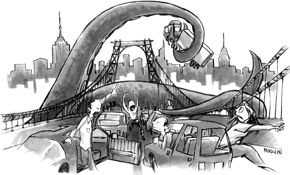In the last several weeks I have given three different talks. I could have “recycled” any one of these talks, using the same “slides” with only minor reshuffling. That is routinely done by a lot of people I know.
But instead I built each talk from the ground up. Yes, there was some overlap of material, but not all that much. It was a lot more work, and at times I wondered why I was driving myself crazy.
But now, having finished the third presentation, I realize that in each case it hasn’t been about giving the talk, but rather about affirming my connection with a community. And because each of these communities is very different, I have needed to be different.
What I realize now is that putting the talk together is at least as important as actually giving the talk. It’s only when I am faced with specific authoring choices — what to put in or take out, what vision to emphasize, what story to tell — that I really understand my relationship with a particular community of people.
And that tells me, in way I might not otherwise have understood, why I want to be a part of that community.
